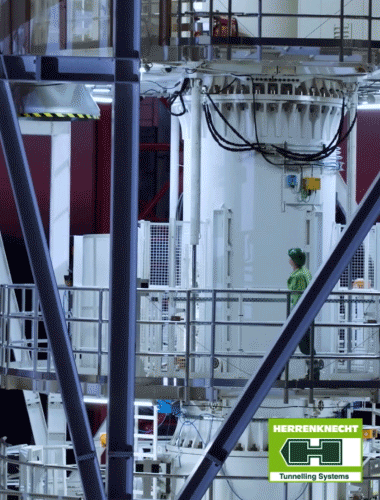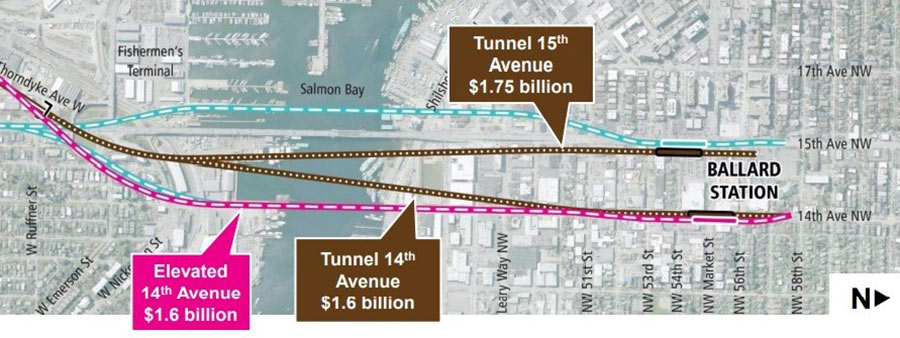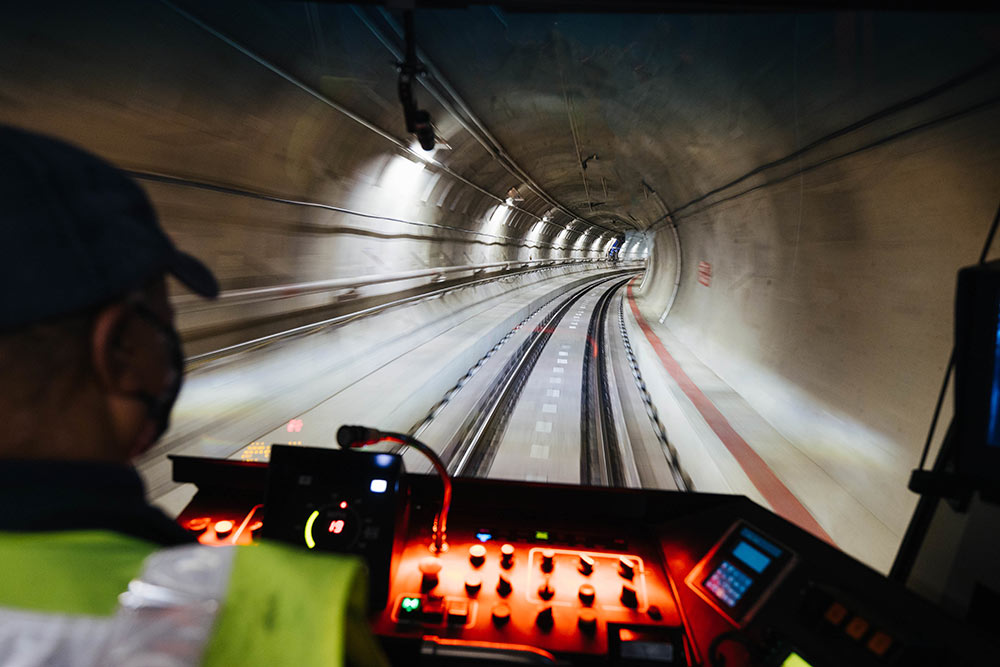Future of Seattle LRT development uncertain 25 Feb 2021
With the Northgate Link and East Link metro extension projects in Seattle on schedule, future projects are now uncertain following a sharp increase in estimated costs and falling revenues for metro operator Sound Transit. An independent assessment of costs, including for the West Seattle-Ballard Line with its extensive underground elements under downtown Seattle, is underway to identify where savings could be made.
The assessment will inform a review of capital projects by the Sound Transit Board that could see delays or a phased approach to future project delivery, or the reduction of project scopes, unless further Federal, State or other third-party funding is found. The Board could also suspend or cancel projects it deems unviable. Results of the review are expected in mid-2021.
The cost of the West Seattle-Ballard Link is now estimated at $12.1 billion to $12.5 billion, compared to $7.9 billion in 2019. Property acquisition prices are the major contributor, rising by US$2.13 billion, or 263%. As design work has advanced, construction costs have also increased by $1.27 billion, or 26%, with more challenging site conditions now expected for station cavern excavation under downtown.
By comparison, alternative proposals for underground sections into Alaska Junction Station in the south and under Salmon Bay into Ballard Station in the north are proving beneficial (Fig 1). Originally estimated to be more expensive than the preferred elevated guideways, latest estimates indicate the difference in costs on the underground route into Alaska Junction has narrowed to only $100 million, from $700 million in a 2019 estimate, and into Ballard Station, costs are equal (Fig 2 and 3).
Both preferred and alternative routes are part of the draft environmental impact statement but it is too early to say whether a change to include the additional underground elements was being considered as part of the ongoing review, Sound Transit explained in an email to TunnelTalk.
The expected opening date for the West Seattle-Ballard Line is delayed after Covid-19 impacted the environmental review work and delayed publications of the draft EIS from January 2021 to mid-2021. The 4.7 mile (7.6km) West Seattle-to-downtown section of the line and the 7.1 mile (11.4km) Ballard-to-downtown section are both expected to open a year later than originally planned in 2031 and 2036, respectively, with these dates subject to the review.
Northgate Link and East Link remain on schedule
Construction of the Northgate Link and East Link extensions is unaffected by the review and remain on schedule.
Construction of the three new Northgate Link stations was completed in February, with the elevated Northgate Station the last to finish following completion of the underground University District and Roosevelt Stations in 2020 by contractor Hoffman Construction. Testing of the 4.3 mile (7km) line with its 3.5 mile (5.6km) twin tube underground alignment began in January 2021 and will continue for several months up to planned opening in 2021.
Construction of the 2,235ft (681m) SEM Bellevue tunnel through mixed ground conditions comprising over-consolidated glacial soils, glacial till and outwash on the East Link extension by Atkinson Construction was completed in August 2020, five months ahead of schedule and after three years. A sprayed waterproofing system was utilised, a key factor in the early completion of construction, with final cast-in-place lining and central wall.
The use of sprayed waterproofing meant the primary lining could be completed more quickly than expected with less time spent ensuring an even finish. Any uneven sections were resolved by thicker application of the sprayed material. The anchors to secure the rebar reinforcement of the final lining was also less costly than the WA anchors used with sheet membrane, and installation of the final lining could begin sooner without the need to work around the gantries required to install sheet membrane.
Track installation is also complete with systems work continuing by contractor Stacy Witbeck-Atkinson JV to scheduled opening in 2023.
References
- Rethink of BART to San Jose configuration – TunnelTalk, May 2020
- A prospect for 2021 and beyond – TunnelCast, June 2021
- A grim 2021 that will not be forgotten – TunnelTalk, December 2020
Underground developments on Seattle LRT 09 Apr 2020
With the Northgate and East Link light rail extensions in Seattle on schedule for completion in 2021 and 2023, the city is planning its next phase of light rail expansion (Fig 1). Known as ST3 and following voter approval of funding in 2016, the programme includes plans for a significant new underground section on the planned West Seattle-Ballard Line, which will run from Alaska Junction in the southwest, through the Chinatown/International District and under the city centre to Ballard in the north.
The West Seattle-Ballard Line will total about 12 miles (19km) of underground and surface alignments with nine new stations (Fig 2). The exact route is yet to be confirmed and “significantly, all the options currently under review in downtown Seattle are for underground alignments,” David Jackson of Sound Transit told TunnelTalk. “There are further reaches of underground alignment being considered near the north and south terminals of the line. Some of these underground options would require additional funding beyond what has already been approved by voters,” he added.
Construction of the West Seattle-Ballard line is to be in two phases for a start of services scheduled for 2030 on the West Seattle element and 2035 for the Ballard link. “The project is in the environmental impact statement study period at present and it is from these studies that the final routes will be decided,” Jackson continued. The Sound Transit Board preferred route and several alternatives form part of the draft environmental impact study, which is expected to be released for public review and comment in January 2021. Design work is expected to progress between 2022 and 2026 with construction beginning in 2025 on the West Seattle element and 2027 on the Ballard section.
The remaining more than 50 miles (80km) of light rail included in the ST3 programme is likely to be at-grade or elevated with the “choice of guideway reflective of the service area of the project”, said Jackson. The West Seattle-Ballard route will run under the downtown area of the city, where space is at a premium, while the remaining routes will be constructed in more suburban locations, where space allows surface development. The ST3 programme is scheduled to be complete by 2041.
East Link update
Work on the 2,235ft (681m) underground Belleview section of the 14 mile (22.5km) East Link to serve the communities of Mercer Island, Bellevue and Redmond, is ongoing by contractor Guy F Anderson and design engineer Mott McDonald and construction managers McMillen Jacobs Associates (Figs 3 and 4). Running through glacial till and outwash gravel under downtown Belleview, SEM sequential excavation method construction has been completed using a Liebherr 950 excavator. The alignment includes a 250ft cut-and-cover structure.
SEM progressed on a full top heading, bench and invert sequence through the first half of the alignment, which ran through more competent glacial till. It then changed to a more controlled excavation through the more complex outwash material in six stages dividing the heading with a single sidewall drift.

Fig 3. Difficult geology for SEM excavation at Belleview
The 38ft o.d. excavation is supported with an initial 1ft thick macro-synthetic fibre reinforced (MSFR) shotcrete and lined with a 1ft thick cast-in-place concrete lining to a finished i.d. of 34ft, with both spray waterproofing and membrane waterproofing in between applied in different sections.
Lattice girders supplied by Jenmar were installed and the macro-synthetic fibre was supplied by Barchip. A Normet Spraymec 8100 robot applied the shotcrete and the spray waterproofing supplied by Mapei. Sheet membrane was supplied by Grace and applied by subcontractor FD Thomas.
With a budget of US$121 million for the underground work within the project total of $1.6 billion, excavation is complete, despite a leaking storm drain causing difficulty with installation of the initial lining, and finishing works are underway. The Belleview alignment will also form part of the planned 11.4 mile South Kirtland-Issaquah Link of the ST3 programme, which is currently scheduled to go into service in 2041.
In addition to the Belleview tunnel, the route includes two additional underground sections that will run through the existing Mount Baker and Mercer Island tunnels. Previously used for road traffic, these two alignments have been converted for use by light rail.
Northgate Link Extension nears completion
Running through some of the most congested neighbourhoods of the Seattle region, the 4.3 mile (7km) Northgate Link includes twin 3.5 x 22ft o.d. TBM-bored alignments lined with segments to 18ft 10in (Fig 6). Excavation was completed in 2016 using refurbished EPBMs from Hitachi Zosen and Robbins and was troubled when the latter machine broke down during its second of three drives. The Hitachi Zosen machine completed the third drive of the parallel tunnel to achieve final TBM breakthrough some five months later than planned. The breakdown of the TBM is currently subject to legal proceedings.
In addition to the challenges of geology and equipment, surface noise and vibration had to be carefully controlled during excavation of Northgate alignments, as the line runs under the University of Washington and residential neighbourhoods. Don Davis, Project Director for the Northgate Link Extension, told TunnelTalk that the concern required schedule constraints on how long the TBMs could work under the campus at one time.
When operational, vibration will be controlled by floating slabs of extra-dense concrete, each of which sits on a custom-built rubber pad. It is the first time the technology has been applied on a light rail network in the USA.
The project also included excavation of 23 cross passages, of which 11 required ground freezing support. Five of these used vertical drilling from the surface, while horizontal drilling from within the completed tunnel was used at six locations where ground conditions, including unexpectedly permeable soil and unstable running silt, made the original dewatering plans infeasible. The remaining 12 cross passages were supported by dewatering and local ground control. At 17ft wide x 18ft high and varying from 15ft to 25ft in length, excavation of the cross passages was by SEM on 3ft headings and applying shotcrete and lattice girders. Ground freezing was used also to create a support canopy for TBM breakthrough into the University District Station.

Refurbished Robbins EPBM for Northgate drives
The Northgate Link also includes construction of two new underground stations at University District and Roosevelt under a separate contract by Hoffman Construction.
With a total taxpayer budget of $1.99 billion with US$1.4 billion for construction costs including $500 million for the underground element, work has so far been completed on schedule and within budget said Davis. Construction was managed by Jacobs Engineering, with design by McMillen Jacobs Associates.
References
- Seattle East Link full bid result – TunnelTalk, November 2015
- SEM excavation for Seattle East Link LRT – TunnelCast, May 2017
- Final breakthrough for Northgate LRT – TunnelTalk, September 2016
- $200 billion for transit funding on US ballot – TunnelTalk, November 2016
- Owner approach to Seattle U-Link extension – TunnelTalk, July 2010
- Low bid cuts cost of University Link – TunnelTalk, March 2009
|
|
|
|
|
Add your comment
- Thank you for taking the time to share your thoughts and comments. You share in the wider tunnelling community, so please keep your comments smart and civil. Don't attack other readers personally, and keep your language professional.











